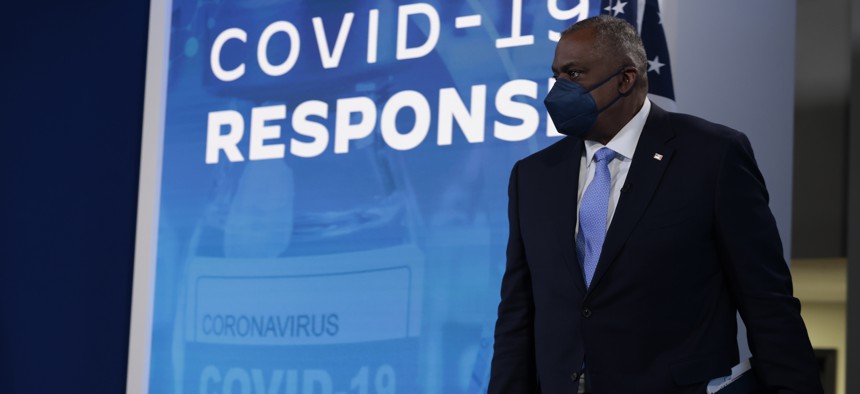Microelectronics-Innovating Unit Gains New Designation from Defense Secretary

WASHINGTON, DC - JANUARY 13: U.S. Secretary of Defense Lloyd Austin arrives for a meeting with U.S. President Joe Biden on the administration's response to the surge in COVID-19 cases across the country from the South Court Auditorium in the Eisenhower Executive Office Building on January 13, 2022 in Washington, DC. (Photo by Anna Moneymaker/Getty Images)
The classification enables the Pentagon to ensure that the “critical mission area remains relevant and viable.”
A memorandum recently issued by Defense Secretary Lloyd Austin III officially designates the Pentagon’s laboratory for innovating tiny chips and circuits—the Defense Microelectronics Activity—as a Center for Industrial Technical Excellence, or CITE.
“This designation allows greater utilization of small runs of [the Defense Department’s] critical microelectronics and semiconductors, both inside and outside the DOD,” Pentagon Press Secretary John Kirby told reporters at a briefing on Tuesday. “It also allows the use of public-private partnerships that provide opportunities to promote partnering agreements between depots and private industry.”
The field of microelectronics involves the exploration and making of extremely small electronic designs and components that computers, mobile devices and virtually every crucial technology system the government relies on.
DOD’s Defense Microelectronics Activity, or DMEA, was chartered to lead the research and fielding of those teeny parts across the department, other federal agencies and the intelligence community. The California-based lab employs specialized microelectronics engineers and support staff to produce advanced technological applications.
Joining other CITEs, DMEA is now in a better position to help enable certain deliveries of critical microelectronics and semiconductors to DOD components and others.
The designation comes as the Pentagon and nation confront severe supply chain challenges, global technology shortages and higher demands for electronics amid the COVID-19 pandemic.
“Microelectronics, I think, as you all are aware, is a DOD critical mission area—enabling many key weapon systems—and we think this [designation] is a positive step forward to help ensure that critical mission area stays relevant and viable into the future,” Kirby said.



